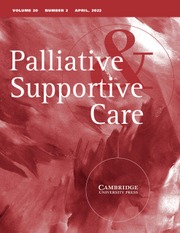It was a sunny day when I realized I had to leave pediatric palliative care.
- Why did you ask so many questions? – a pediatric resident asked me.
In that moment, a conclusion that had been silently taking shape over the past year became clear. Like a seed growing unnoticed since the day my first child was born.
I trained at a pediatric hospital in Madrid, specializing in pediatric intensive care. During my third year of residency, the hospital launched a pediatric palliative care program. Aware of my limitations in end-of-life care, I decided to rotate with them. Later, after completing my residency, I began balancing my intensive care work with summer shifts and on-call duties in palliative care (Figure 1). Somehow, I lived on two planets orbiting the same satellite: childhood death.

Figure 1. Identification cards for pediatric intensive care and palliative care.
Our work in palliative care was home-based. From pediatric intensive care machines to toys. From sterile boxes to living rooms. From PEEP to Peppa Pig. From hemofilters to PlayStation. If patient care were a sport, palliative care was always an away game.
We divided the province into quadrants, and each palliative care team – usually a nurse and a pediatrician – visited the children assigned to their area. This kind of assistance required immersing ourselves in patients’ homes and lives, something possible only by the families’ generosity and trust. We worked into their most intimate spaces. We saw birthday photos, zoo trips, and family holidays. Snapshots from life before illness. The same kinds of images everyone hangs on their walls. I often avoided looking at them, as if to protect myself.
As I said at the beginning, it was a sunny day. We were visiting a patient for the first time. Two pediatric residents came with us. The child was almost one year old.
No issues during pregnancy or birth.
First child of young parents.
First grandchild on both sides.
First seizure at five months… and the last day of normal life for everyone.
That seizure was the beginning of a slow and irreversible neurological decline. During one of many hospitalizations, amid a storm of tests, someone looked deeper into the back of his eyes. There, a cherry-red spot pointed to the diagnosis: Tay-Sachs. As pediatrician, I know that naming a disease can be a tribute to a brilliant mind. However, often, as in this case, it was a sentence for the child living with it. Few eponyms are free of tears.
The child’s room was filled with light from a large window. In the center, on a carpet that looked like a road, we saw a smiling boy. He sat among pillows, struggling to hold up his head, shaking a small toy car in his hand. I stepped toward him. His parents held hand; they knew everything was about to change.
After the physical exam and a brief conversation about recent days, we laid him back on the carpet. He was tired and let the car fall. I began to speak, choosing my words carefully, keeping it simple. Less is more; there would be time for more later. As I talked, I picked up the toy car – almost involuntarily – and suddenly I started thinking about my son. Anything could trigger it. It just happened. My son entered my mind and stayed there for the rest of the conversation. I hoped nobody noticed it.
I started to ask about the disease’s progression. The first smile, the first steps, and the moment something felt off. The parents interpreted it as clinical interest, they began to speak slowly. When we are hurting, it often helps to talk. While explaining what is happening, we sometimes begin to explain ourselves. I spoke with them about their child for almost an hour. We said goodbye after giving them our contact details and guidance for emergencies. Once we were outside, one of the residents placed a hand on my shoulder.
- Why did you ask so many questions? – asked.
They looked at me calmly while I put down my bag.
- To obtain as much information as possible – I replied
- That’s not true, Alberto – one said, quickly.
- You were comparing that child to your own – the other added. – You wanted to be sure your son didn’t have the disease.
I had no reply.
I nodded.
I smiled.
I picked up my bag.
They had seen it. There was no clinical curiosity behind my questions. There was fear. Parental fear. I was a terrified father staring too closely at a tragedy I never wanted to imagine for my own child.
They were right.
We drove back to the hospital in silence. The trip took 30 minutes, long enough for me to realize my time in palliative care was over. I was no longer fit for the work. My presence was not fair to the children, the families, and the team or to myself.
I took a pair of weeks to explain it to the palliative care chief. Firstly, I saw it as a personal failure. Who I had become was interfering with what I had to do. It took me years to realize that recognizing this was one of the most important lessons of my professional life.
Today, I work exclusively in pediatric intensive care. Those days in palliative care have left a permanent mark on the way I connect with patients, families, and colleagues. As we know, reaching a diagnosis often depends on asking the right questions. That sunny day, I asked many of them and, unexpectedly, the most important one was the one I answered myself.
Author contributions
A.G.-S. drafted and wrote the manuscript, and approved the final manuscript as submitted.
Funding
No funding was secured for this study.
Financial disclosure
The author has no financial relationships relevant to this article to disclose.
Competing interests
The authors have no conflicts of interest to disclose.



